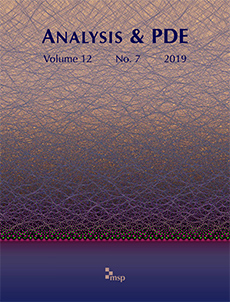Abstract
This article shows that restricting the domain of the Dirichlet–Neumann map to functions supported on a certain part of the boundary, and measuring the output on, roughly speaking, the rest of the boundary, uniquely determines a magnetic Schrödinger operator. If the domain is strongly convex, either the subset on which the Dirichlet–Neumann map is measured or the subset on which the input functions have support may be made arbitrarily small. The key element of the proof is the modification of a Carleman estimate for the magnetic Schrödinger operator using operators similar to pseudodifferential operators.
Citation
Francis Chung. "A partial data result for the magnetic Schrödinger inverse problem." Anal. PDE 7 (1) 117 - 157, 2014. https://doi.org/10.2140/apde.2014.7.117
Information





